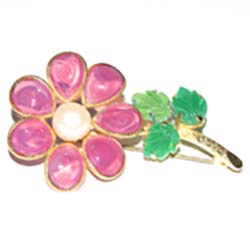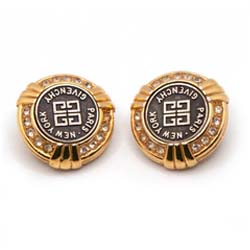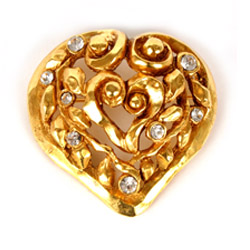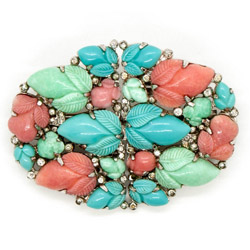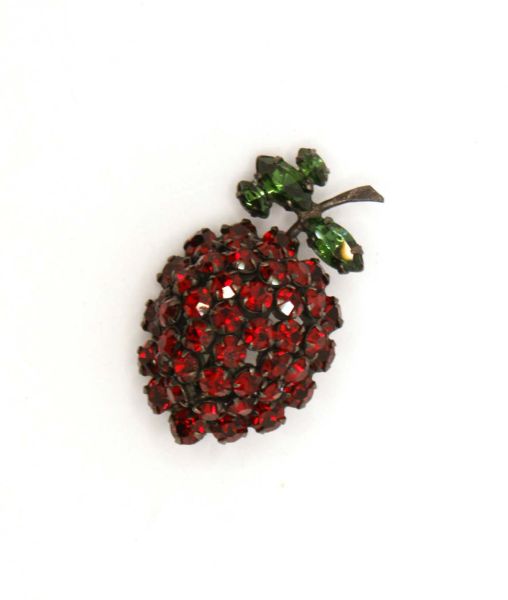The Characteristics of Schreiner Jewellery
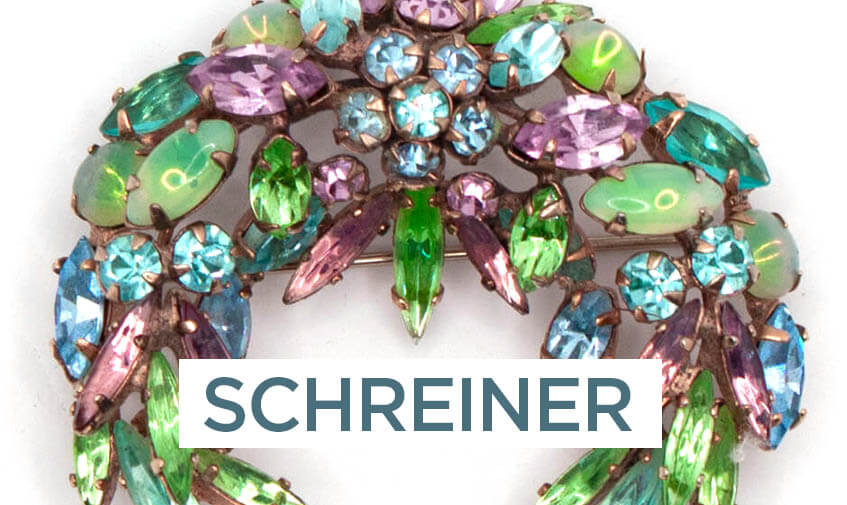
How to identify signed and unsigned pieces of Schreiner jewellery
The styles of Schreiner jewellery
Schreiner jewellery is probably most known for its distinctive and vibrant colour combinations which were used with gusto across all Schreiner ranges. Pieces were made mixing sky blue with orange, purples with greens, greens with oranges, pastels and all manner of jewel tones. Get a glimpse of the fabulous pieces we offer in our range of Schreiner pieces.
Schreiner created a huge range of jewellery pieces including brooches, bracelets and necklaces and their pieces displayed a particular range of construction techniques which can be used by collectors to identify their items.
The construction of Schreiner jewellery
Layers
Many Schreiner brooches and pins have a three-dimensional quality because the pieces were built up of multiple layers.
Hook and Eye
Rather than soldering entire layers together Schreiner used a hook and eye technique. One layer was hooked to the eye of another layer. This technique saved time and solder and improved the build quality.
Inverted stones
One of the most recognizable Schreiner characteristics and the easiest to spot is the use of inverted stones.
Cupcake settings
Stones were often set into crinkled cups which collectors liken to cupcake wrappers.
Riveted settings
Small stones were often attached with the use of rivet settings. This was often used to attach small crystals into flower shaped patterns.
Elaborate prongs
Larger stones were often set using elaborately designed prongs. Dogtooth is the most common design. These are identified by their triangular shape and open centres. Other designs included a leaf shape and a Fleur-de-Lys pattern.
Extension chains
Schreiner necklaces had a five-loop extension chain decorated with four stones. Necklaces made for fashion clients did not have these extension chains as they were made to a specific size and were not meant to be adjustable.
Lucite
Schreiner used Lucite plastic in some pieces to replace paste stones allowing larger stones to be used without sacrificing wearability due to weight. This was particularly useful for the bigger earring designs.
Brooch/Pendants
Many brooches and pins also included a pendant hook, allowing the client to wear the jewel as a brooch or a necklace.
Many of the typical Schreiner characteristics can be seen in the following image. Note the layered hook and eye construction, the crinkled cupcake like stone settings, the rivet settings for smaller stones and the dogtooth prongs. This brooch also features a pendant hook allowing it to be worn as a necklace or pin.
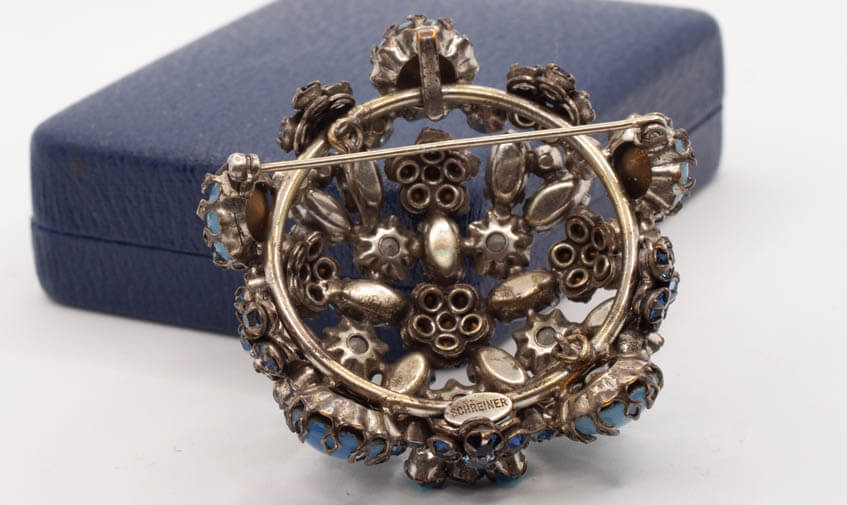
Donut hole
The typical Schreiner clip back earring has a distinctive clip-arm featuring an open centre. These were thought to give the wearer extra comfort. Some other makers also used the donut clip-arms, they’re also frequently found on Austrian designs.
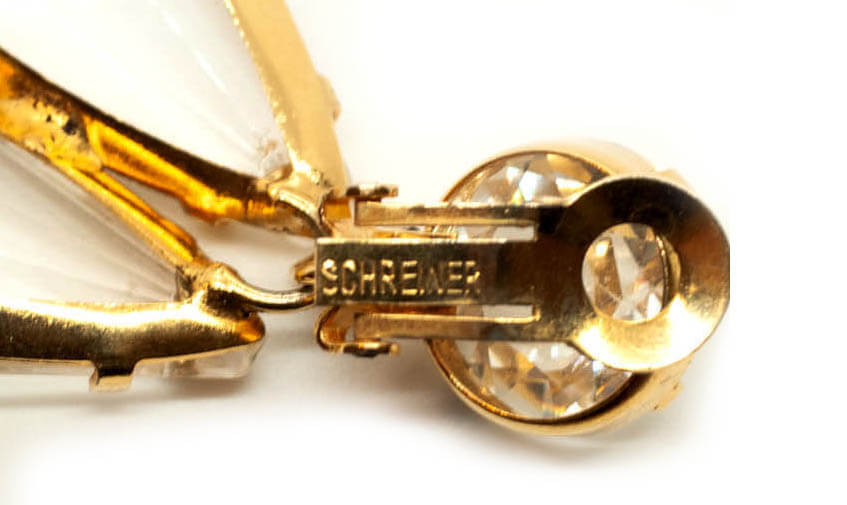
Parallel chains
Necklaces and bracelets sometimes had rows of crystals and stones attached to parallel chains.
Schreiner jewellery stamps
Although many Schreiner pieces destined for ready-to-wear designers remained unsigned some pieces which were sold in department stores do display the Schreiner name.
Earrings
As seen in the photo above, earrings were usually signed with ‘SCHREINER’ in block capitals on the clip-arm.
Brooches, Necklaces and Bracelets, belts
Signed on an oval plaque affixed to the back of pieces. Signed either ‘SCHREINER’ across the centre, or ‘SCHREINER’ across the top with ‘NEW YORK’ at the bottom. These pieces most likely date from the 1950s to the mid 1970s.
The earliest pieces from the 1940s to the early 1950s are sometimes signed ‘SCHREINER JEWELRY N.Y.C’ on a half-circular plaque.
For an in depth look at Schreiner jewellery and its history get yourself a copy of the amazing Schreiner book by Carole Tanenbaum and Eve Townsend.

